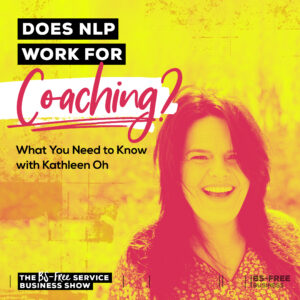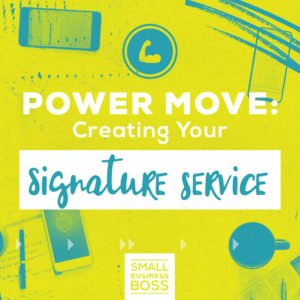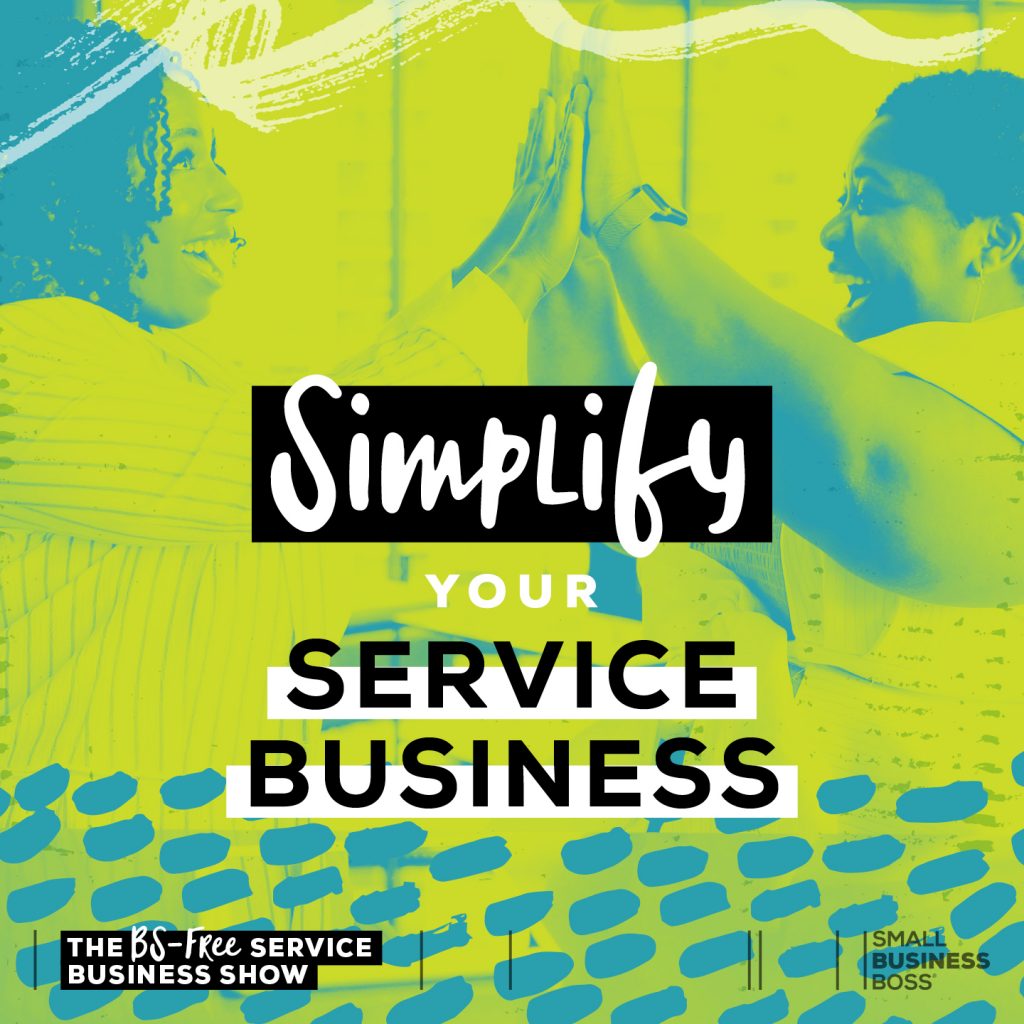
Search the site:
Simplify Your Service Business
You know why I love service businesses so much? The answer may surprise you, so here it goes. It’s because they’re the absolute simplest business model around. In this episode, I’m sharing what you really need for your service business and how you simplify yours.
The last few episodes we’ve been talking about ways to ensure that your service business works for you. First, we talked about how I work with clients to customize their experience and to illustrate how we need to carefully curate what advice, guidance, and coaching we take about our service businesses. I believe that’s one of the best ways for us to not buy into the hype of celebrity entrepreneurs.
And last week, I talked about how to create a service business that’s aligned with your skills, strengths and values. Both of those episodes are worth a listen if you run a service business and want to root yourself in fundamentals, not fluff.
For today’s episode, I want to share what I think is the FASTEST way to simplify your service business. And no, it’s not some fancy system showing you how to do anything, instead, it’s a tried and tested approach to services that helps you cut the fluff.
So many times when service business owners come to me, their heads are swimming with advice and teaching that just doesn’t work for them. Frankly, they’re focused on the wrong things, and usually, they know it, but they’re not sure what to do instead.
It’s a case of celebrity entrepreneurs and inexperienced coaches overcomplicating things and creating problems we don’t actually have in an effort to sell us things.
As someone who’s been working in service-based businesses for over 20 years, and with service-based business owners for over five years, I want you to know this business model should be simple.
There’s a reason that for years I’ve been such a strong advocate for it, and that’s because it works. It’s the simplest, most sustainable way for us to build a business and to make a living.
Don’t let their simplicity fool you. Service businesses are powerhouses and that’s why most small businesses are service businesses.
So, let’s talk about what you really need to run a service business, so you can take a look at your business and figure out what you may be able to stop doing. (Or where you can add strategically to help you succeed!)
The Three Core Pillars of Service Businesses
Every service business is built on three pillars, and this is something I’ve been teaching for years as the BS-Free Service Business Foundations Framework.
Truthfully, the name is irrelevant, as I know for many of my clients when I first share this, a lightbulb goes on as they realize how many other things they’re doing that don’t actually matter to them as service business owners.
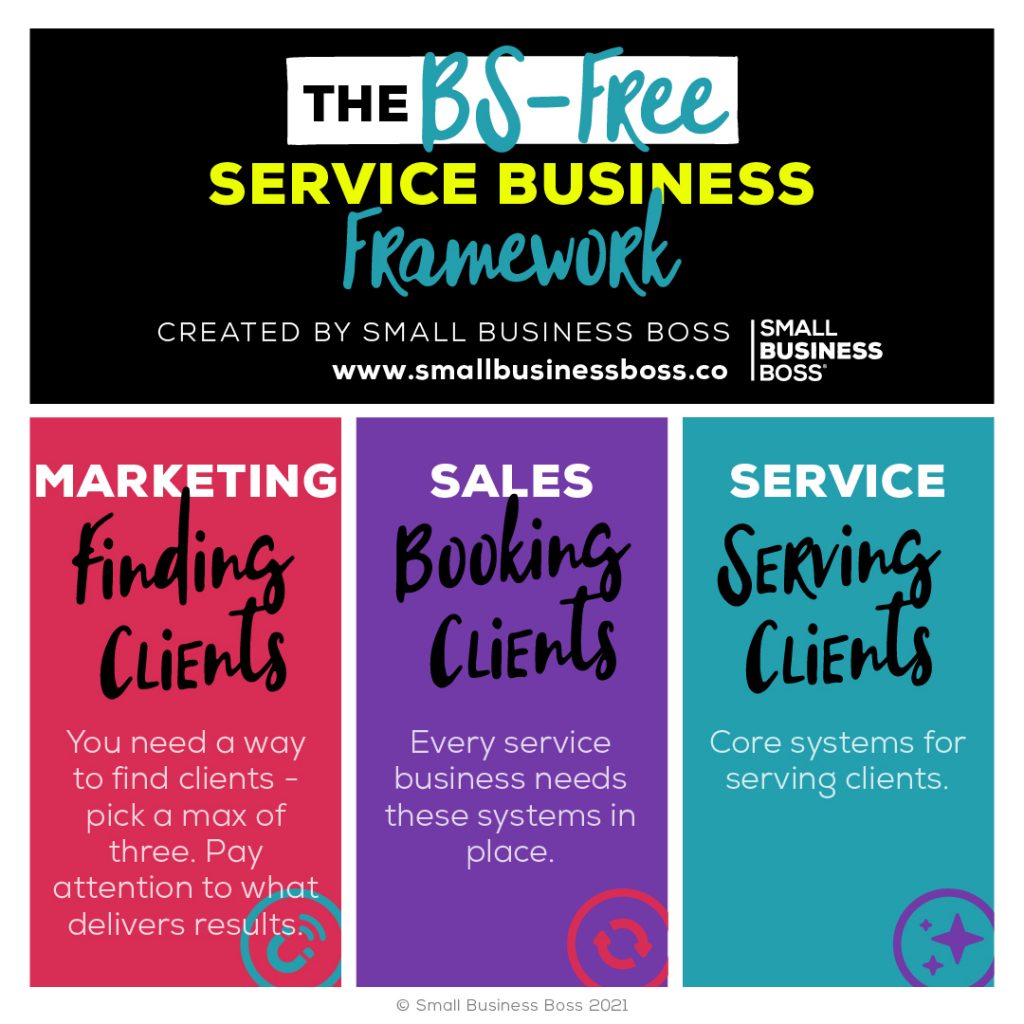
The three pillars:
- Marketing or finding clients
- Sales or booking clients
- Service or serving clients
Notice what’s not here? A whole bunch of other things that waste your time, energy and money. Sure, you need a foundation for your business made up of things like a website, but what you don’t need is to keep creating make-work projects that distract you from where the action really is – finding, booking and serving your clients.
Now, let’s walk through each one in a little more detail so you can see what I include, and what I don’t include in each one.
Marketing: Finding Clients
When it comes to marketing, I find most service business owners have one of two problems.
The first group is extremely passive, and they don’t really do any proactive marketing for their business. Many times they’re reliant on referrals, and eventually, they may be struggling to find clients if those referrals dry up.
More on referrals in a sec, but with this group, the goal needs to be to get them to stop waiting for clients and into a little more action so they’re in the driver’s seat.
Group number two tends to be doing so much marketing that it’s unfocused and they’re not really sure where results are coming from. Many times, these people have been taught they need to be everywhere, and they’re doing everything they can to show up.
The only problem is, they’re often executing on tactics that aren’t aligned with their target client or that are truly a long-term play to getting clients.
When it comes to your marketing, the best thing you can do to ensure your focus is to pay attention to what delivers results. This is why I strongly recommend you track the source of every single client you land.
And if you’re on team “be everywhere” you need to constrain how much marketing you’re doing so your efforts aren’t just busywork.
For service businesses, I group the types of marketing into three groups:
- Your Network: Referrals, Introductions and Collaborations
- Building Connections & Community: Blogging, Podcasting, Social Media, Email Marketing, Cold Outreach Events
- Other People’s Platforms: PR, Speaking, Guest Posting, Guest Teaching
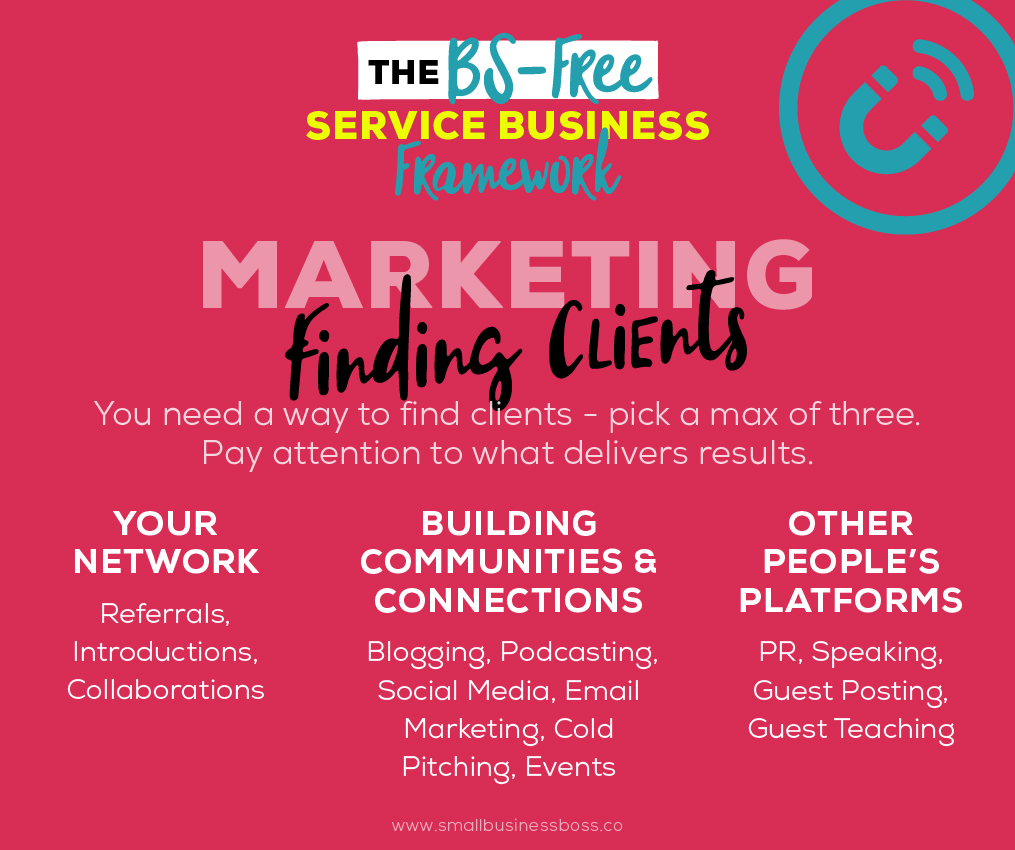
Ideally, I recommend picking two to three total of these tactics and ensuring you pay attention to what works, and what doesn’t. You may find that your best clients come from one source, or from a variety of sources.
I know with Small Business Boss, I’ve learned that my client’s journey to us isn’t very linear and that I need a variety of ways (including this podcast) to engage people. This is a great example of knowing my audience and paying attention to the patterns over time. For a long time, this really frustrated me, then earlier this year, the lightbulb went on as I looked at the data in detail.
Sales: Booking Clients
Get ready to breathe a sigh of relief, as your life with sales is about to get a lot easier. So much of what’s out there for sales is needlessly complicated and not designed for service business owners.
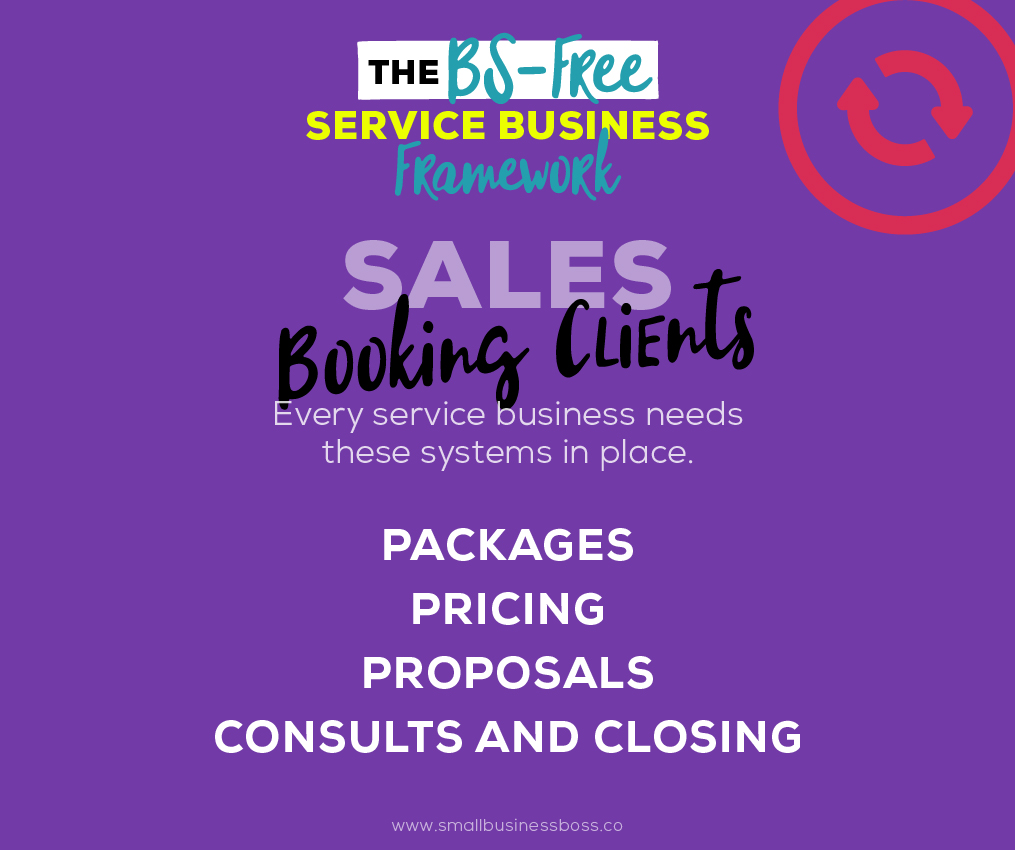
What you need to book clients are four core systems:
Packages
When you offer services, there are a lot of different ways to package your brilliance and sell it. While the idea of packages is nothing new, how exactly you create your profitable package can make all the difference.
The right package in your business can be a game-changer as you go from trying to articulate what it is you do to being able to sell your services with confidence. Instead of having to talk through everything involved as part of a sales conversation, you’ve got an informed potential client who knows what you offer and how you can work together.
Think of it this way: when you’re selling your services, you want your prospective clients to be as ready to buy as possible. By outlining what you do, how you do it, and what their investment is, you’re able to spend your time on would-be clients that are better qualified. Instead of getting on the phone to talk to someone who needs to be convinced, you’ve got someone who’s already 80% of the way to making a decision.
Pricing
Every business needs a pricing strategy. How you price your services can make or break your business, so your pricing strategy ensures that you’re thinking critically about how to price each one of your services.
When you have a pricing strategy and system in place, everything gets a whole lot easier as you’re able to determine pricing based on facts, not what’s going on in your head. (Speaking of which, if you need help with this – check out the Pricing Guide and Calculator in the Small Business Boss Vault.)
Proposals/Sales Pages
Next up, you need a way to communicate your offer. In some cases, a sales page will suffice, and in others, you’ll need a proposal.
Don’t be fooled by the people who tell you that proposals aren’t needed. In many cases, they’re completely necessary depending on your industry and target market. If you struggle with proposals, I recommend using a tool like Proposify as they now offer a free plan, and their templates can help you easily systematize your proposal process.
Consults & Closing
A standard operating procedure for many of us are offering consult or discovery calls to determine the fit with potential clients. For those of you offering coaching services, discovery calls are a great way for would-be clients to get a taste of what it’s like to work with you.
For done-for-you service (DFY) providers, consult calls offer a way to discuss a potential project. Discovery calls are best left to coaches as they can be a major waste of time for DFY service providers and an excellent way to give away strategies for free.
Regardless of what type of call is best for your business, you need a clear plan for that first date with your potential client. Start by prequalifying people. Don’t let just anyone and everyone get on a call with you. Once you get on the call you should have a clear plan for how that call goes as well as next steps.
I include closing as part of the consultation process, as a reminder that we shouldn’t invest the time and energy into these calls and fumble the follow-up. I recommend every service provider have a series of scripts for that follow-up, as well as set tasks so you don’t avoid doing it.
Service: Serving Your Clients
The last pillar is what happens after the sale, and to ensure an outstanding client experience (CX), a number of core systems are required.
One thing I’ve consistently noted is a fixation on the onboarding process, but not a lot of thought about what happens a month or months into the engagement. Starting off strong is crucial, but what happens in the weeks or months that follow is equally, if not more important.
Let’s walk through the must-haves, and you’ll notice that this section requires much more in terms of systems or processes than others. Keep in mind the goal here is to simplify, so this doesn’t mean serving your clients needs to be complicated or fancy.
Ultimately you need to create a solid, consistent client experience by paying attention to what matters most to clients. So many times we focus on onboarding, or sending a gift, when really, how you deliver your services day in, day out is what matters. That’s really what will build (or break) trust over time that leads to referrals and repeat business.
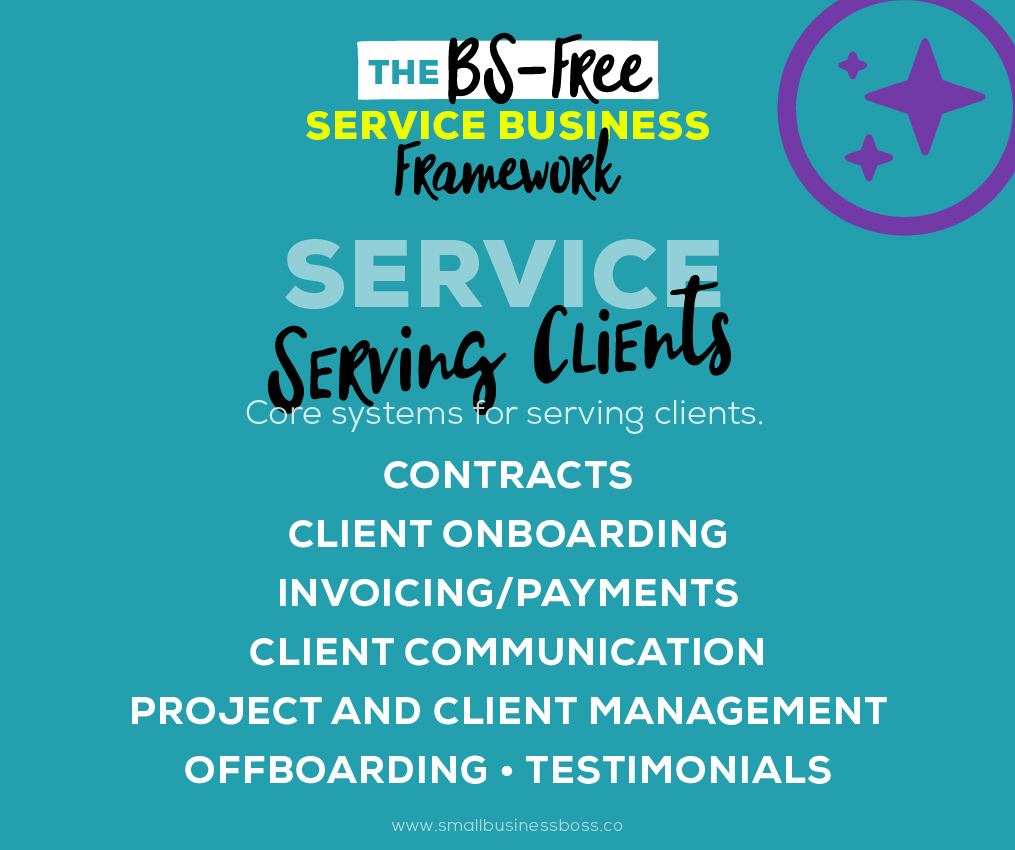
Let’s quickly run through those systems at a high level, keeping in mind, each one of these could be a standalone episode.
Contracts
Contracts are where we formalize the relationship with our clients, so we need a system in place to ensure that every time we have to get a contract out it’s not a major time suck or drama.
Onboarding
To get clients started off right, we need a clear, easy-to-follow onboarding process so they immediately feel like working with us was the right decision. Map out the steps for your process over the first few weeks of working together, taking care not to overwhelm the client.
Payments and Invoicing
Whether it’s collecting the first payment or ongoing invoicing, we all need a way to get paid. For some of you, this may be as simple as a button on a sales page connected to a payment processor like Stripe, and for others, you may need an invoicing system.
If you do recurring billing of clients or collect multiple payments, ensure you have an easy system for ensuring you’re billing on time. Consider auto-pay or automated invoicing to put it on autopilot if appropriate.
Project and Client Management
For those of you offering DFY services, having a set process for your project and client management is essential. Ideally, you’ll have a client process you follow for each type of engagement as well as a project management system to keep your dates and deliverables on track.
Client Communications
One of the biggest trouble spots for many service providers is around client communication, and I consider this a unique category than client management. Client comms is more about the softer side of this and working to ensure that the client feels they’re in the loop.
In the middle of a project or engagement, or when you’re on a monthly retainer it’s all-too-easy to forget that your client doesn’t necessarily know, let alone understand what’s happening. That’s why you need to have places to check in with them and reassure them along the way.
I’m a big fan of constantly communicating what’s happening, what to expect next and what we’ll need from our agency clients so there are no surprises. I look at it as part of CX, as well as making our lives easier. By staying on top of this communication on a weekly basis, we’re getting ahead of potentially annoying questions and building trust with clients.
If you’re not sure where you need to focus on your client comms, consider where you tend to get a lot of questions or your clients get nervous. That’s a great place to start!
Offboarding
So many times we start our client engagement strong, and then our offboarding is lackluster. Offboarding your clients should be as simple as possible and put a bow on your work together. This may include the transfer of files, instructions or other key details.
Take the time to lay out everything that’s needed to wrap up with clients so when it’s time you can do it quickly and easily. This can be as simple as a Google Doc with a canned email you customize for each client as they exit.
Testimonials
Finally, everyone and I mean everyone needs a system for testimonials. And if you’re thinking, why is this part of service, it’s because our testimonials are directly tied to the CX we deliver.
If you don’t have a process in place, now’s the time to get one done. This can be a simple Google Form to collect the info, and a canned email to send to clients two weeks after you wrap up.
Striving for Simplicity: A Work in Progress
For each of the items outlined above under marketing, sales and service, keep in mind that these are all a work in progress, and they don’t need to be complicated or fancy. In fact, the simpler they are the better as the more complex a system is, the more apt it is to break.
You may choose to use a tool like a Dubsado or Honeybook to help with elements, or use best-in-breed tools like Proposify or Harvest to help manage parts of it.
Keep in mind that while tools can be a time-saver, depending on your business and skill level, they may add more layers of complexity than what you really need. If you only work with a handful of clients each year, the cost or time to manage the tool may exceed the efficiency gains from it.
How Will You Make Your Business Simpler?
As we wrap up this episode, consider what you may be doing in your business that’s adding needless complexity. As a service provider, you don’t need to be doing all the things, but instead looking at the things outlined above and refining them over time.
A few questions to ask yourself:
- Marketing: Where am I making my marketing too complicated? Where am I really getting results?
- Sales: What elements of the sales process do I need to simplify or refine? Where do I have holes in my process that may be impacting my ability to book clients?
- Service: Do I have the basics covered? Where are things too complicated or am I adding too many steps?
I’m willing to bet you can easily see at least a couple of opportunities to simplify your service business. By focusing on the basics and banishing busywork, we’ll be best able to sustain a service business for the long-term and build and keep trust with clients.

I’m Maggie Patterson (she/her), and services businesses are my business.
I have 20+ years of experience with client services, am a consultant for agency owners, creatives, and consultants, and vocal advocate for humane business practices rooted in empathy, respect, and trust.
Read or Listen to the Latest
For Solo Business Owners
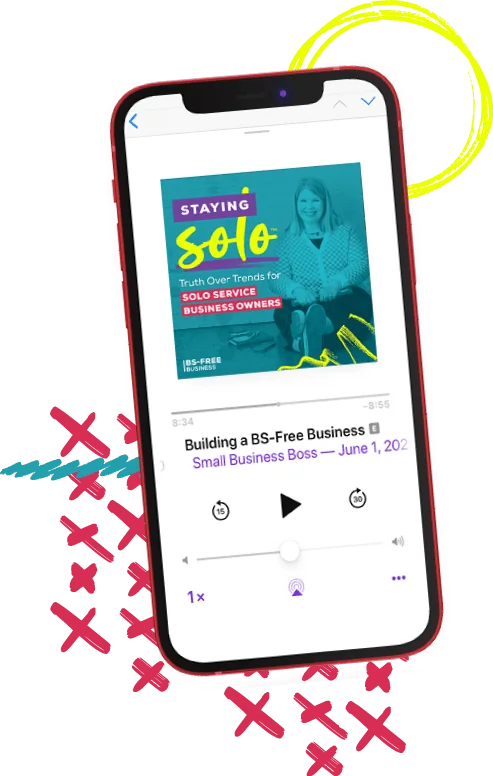
Growing a solo service business is tough.
It’s even harder when you’re bombarded with BS advice that steers you away from your values and why you started your business in the first place.
This is the podcast for solo creatives and consultants who want to remain as a team of one and have zero interest in the hustle and grind of typical business teachings.
Subscribe now and never miss an episode.
For Micro Agency Owners
Most podcasts for agency owners obsess over revenue growth as the ultimate success metric.
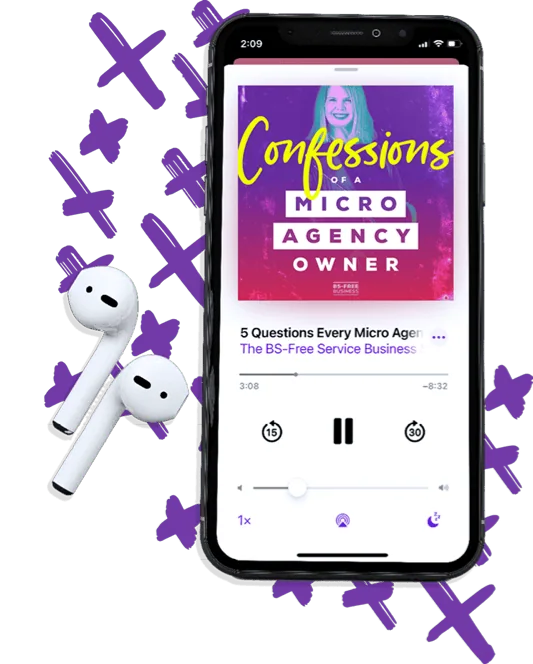
But here’s the truth: not everyone wants to make millions. Your goal might be to build a sustainable business that lets you have a life and doesn’t run you into the ground.
Join me as I spill my shameless confessions and share everything I’ve learned about building a micro agency that skips the BS of tired and typical agency teachings.
Follow Now on All Major Podcast Platforms


